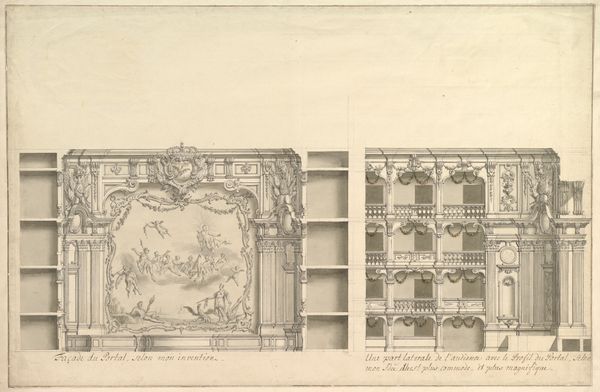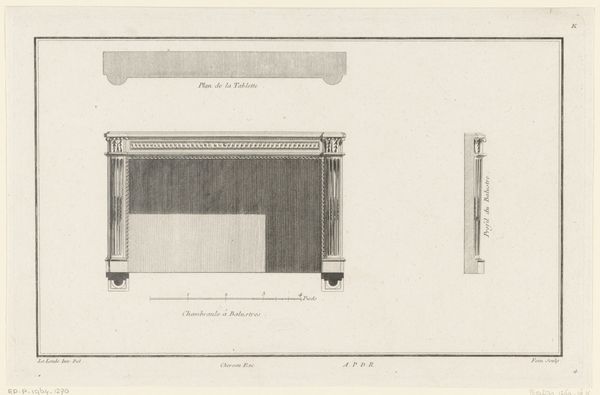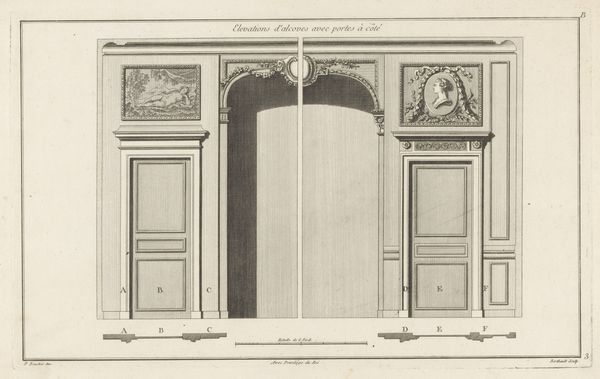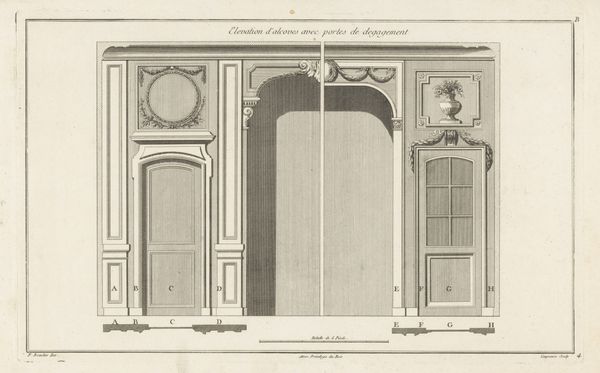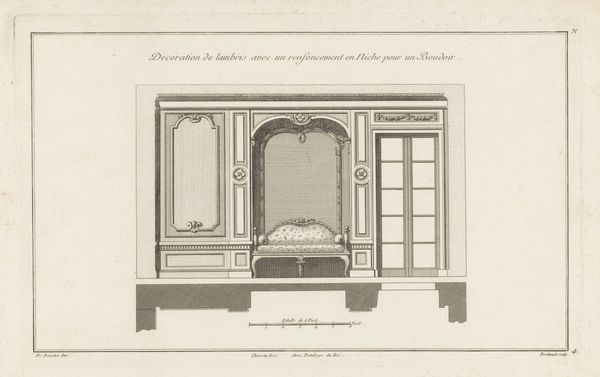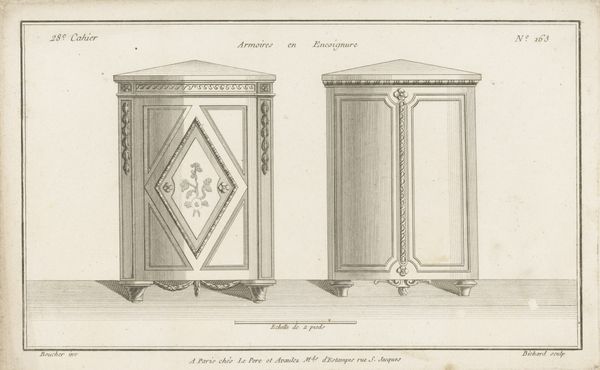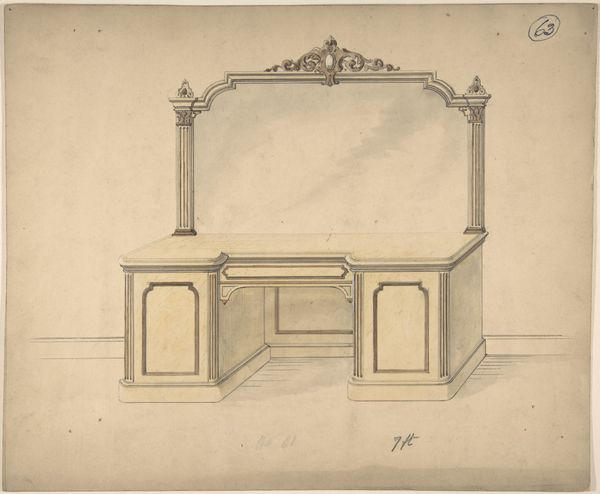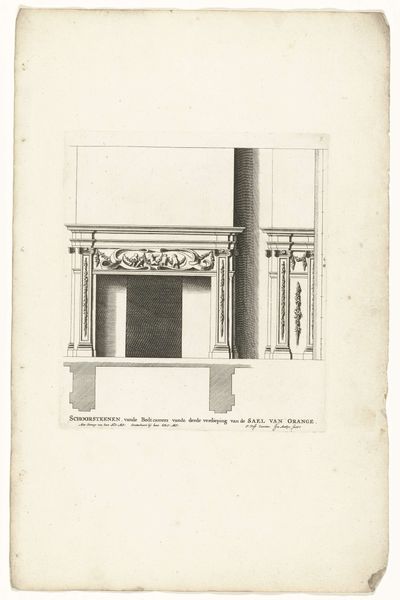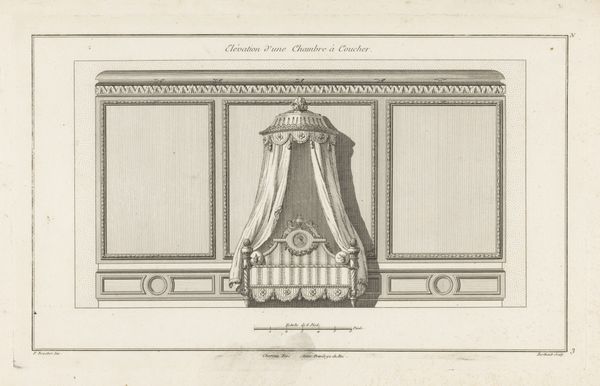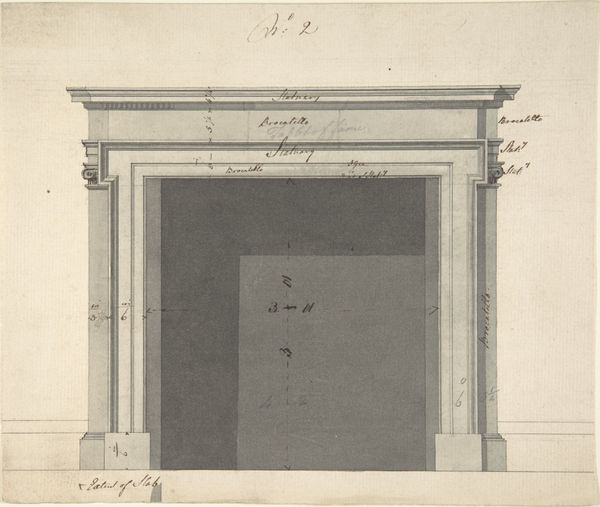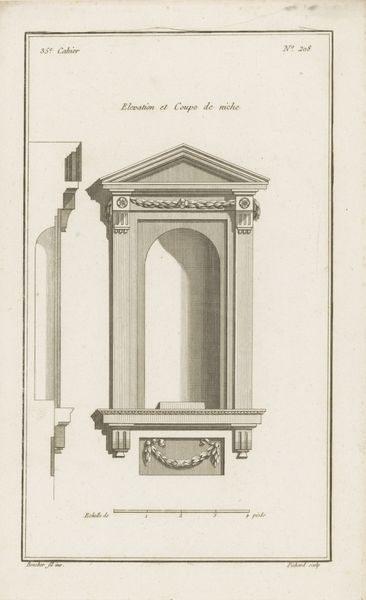
Elevation of Proscenium and Lateral View 1745 - 1755
0:00
0:00
drawing, print, architecture
#
drawing
#
baroque
# print
#
perspective
#
cityscape
#
architecture
Copyright: Public Domain
Curator: This delicate drawing from the mid-18th century is entitled "Elevation of Proscenium and Lateral View" and is attributed to Giuseppe Galli Bibiena. You can find it in the collection of the Metropolitan Museum of Art. Editor: The rendering almost vanishes into the paper itself. A muted blueprint aesthetic with very little contrast…was this preliminary work on the fly or after-the-fact documentation, I wonder? Curator: Bibiena was renowned for his elaborate stage designs, reflecting the drama of the Baroque period. Note how perspective isn’t merely about architectural representation; it's almost a psychological tool, enhancing the spectator’s perception of depth and grandeur. The eye is led towards an implied vanishing point that dwarfs any figure. Editor: Absolutely. And knowing this was likely for a stage set design makes me consider the immense labor needed to actualize even this conceptualization. Who were the carpenters, the painters, the people constructing and deconstructing these fantastic spaces? It's a shadow narrative alongside the celebrated design. What materials would've been employed? I would assume wood would be essential to build it. Curator: Precisely, a convergence of artistry and sheer brute work. What intrigues me most is how this architectural facade is crowned with an empty shield. This potent emblem of noble lineage…is it an invitation for new authority? Or is the design more concerned with pure aesthetic aspiration, separate from class and dynasty? Editor: It also hints at temporality – stage sets are made to be ephemeral, right? All the detailed work just for limited performances. Then they disappear and become materials for something different. Was it designed to reflect some real-world, existing portal? Curator: Perhaps, but I feel the architecture has become secondary; these were likely fantastical interpretations influenced by contemporary politics, social life, and theatre all at once. Its symbolic presence carries layers, resonating differently according to its audience's world-view. Editor: It definitely is hard to believe that we are looking at a document relating to performative production; it alludes to more lasting structures. Examining material outputs of theatrical stages really shows us so much more about daily lives of labor in past centuries, as well as design and aesthetic values of the high society of the moment. Curator: I agree. These images serve as echoes, capturing a fleeting cultural and emotive landscape within the enduring framework of theatre.
Comments
No comments
Be the first to comment and join the conversation on the ultimate creative platform.
